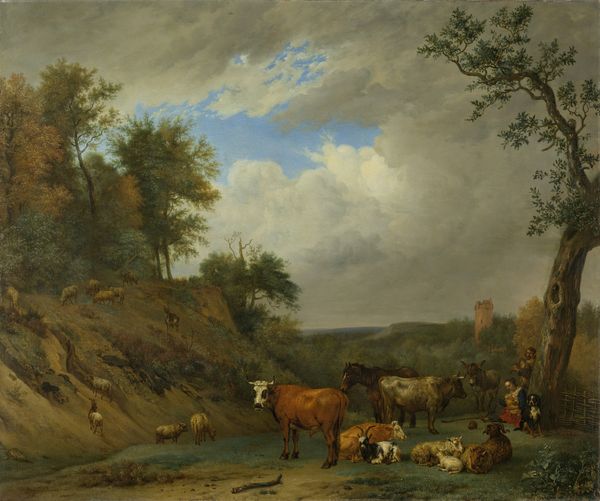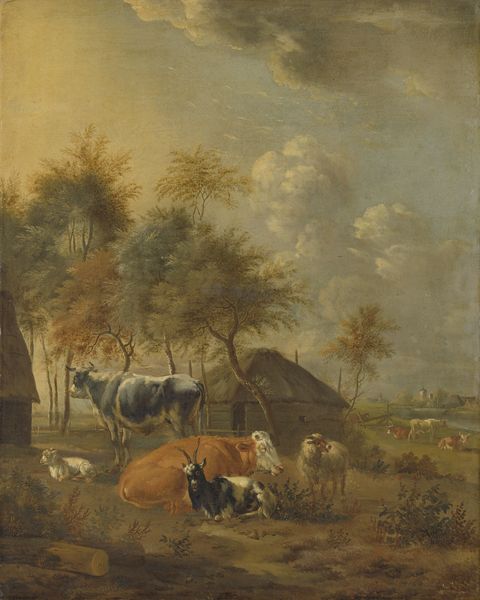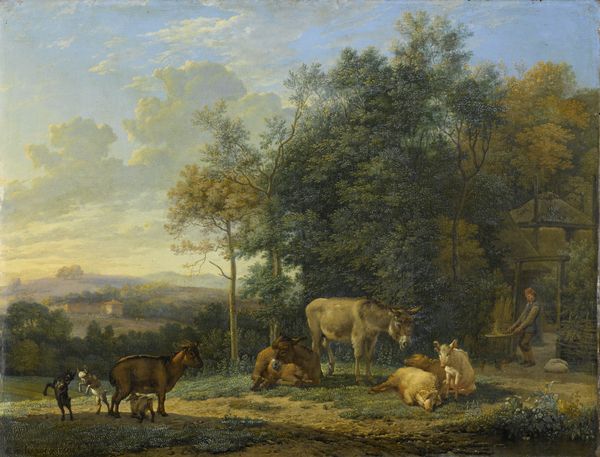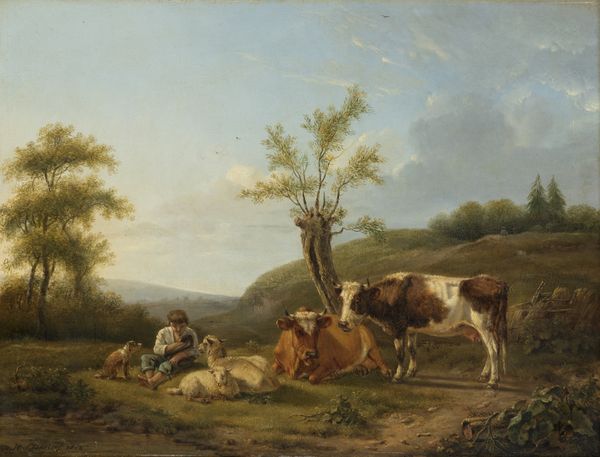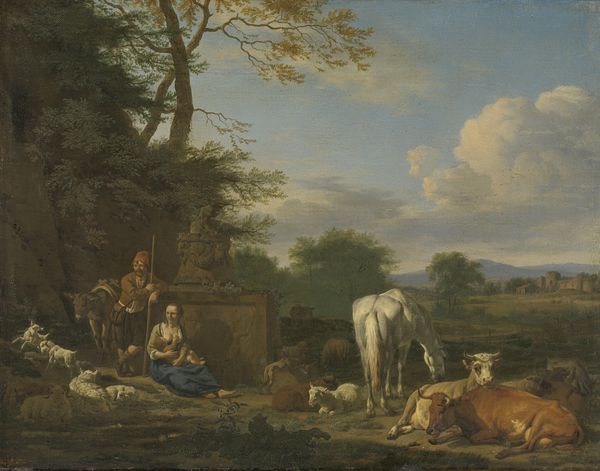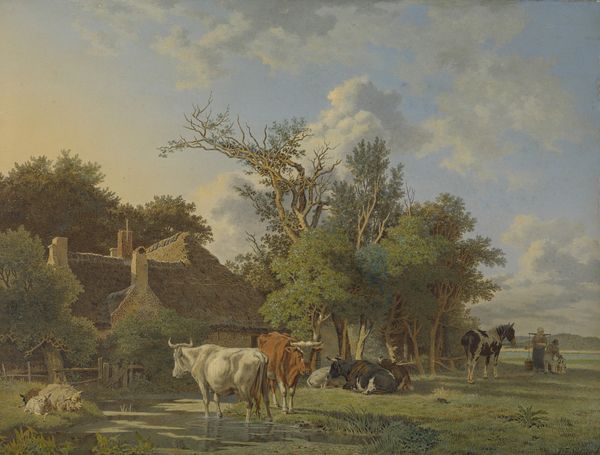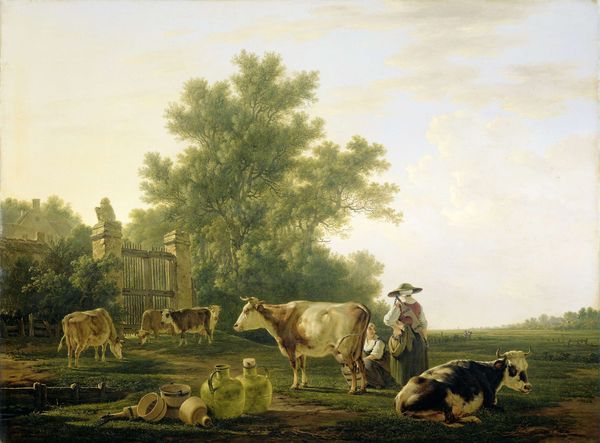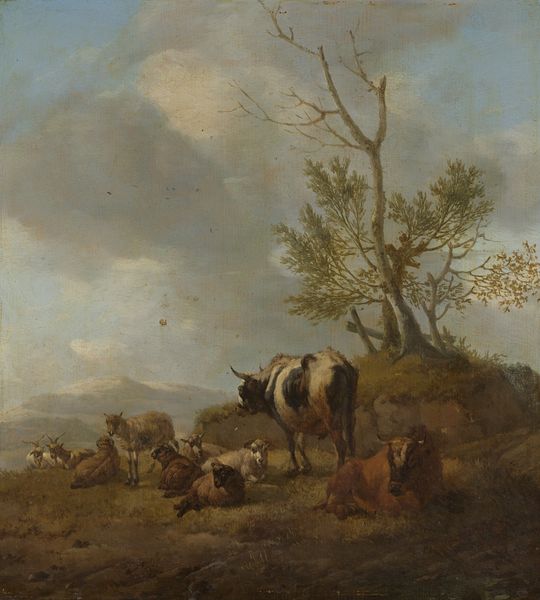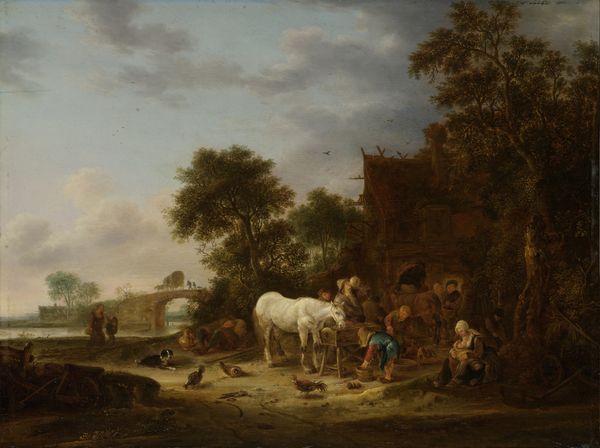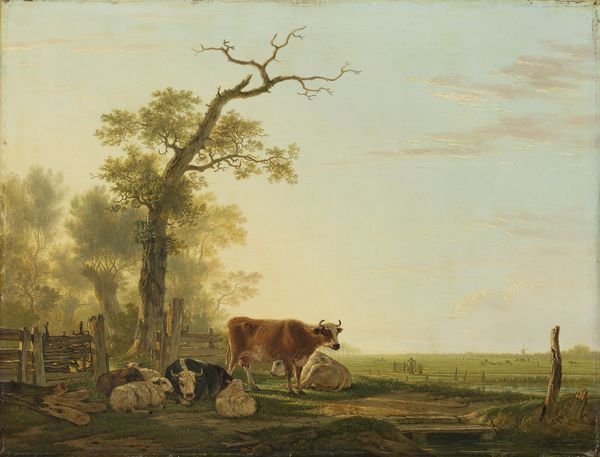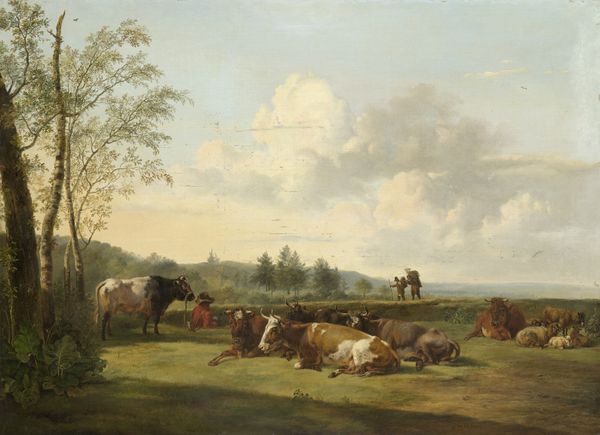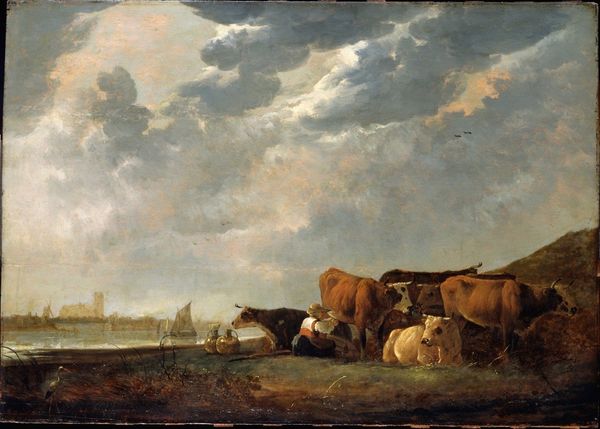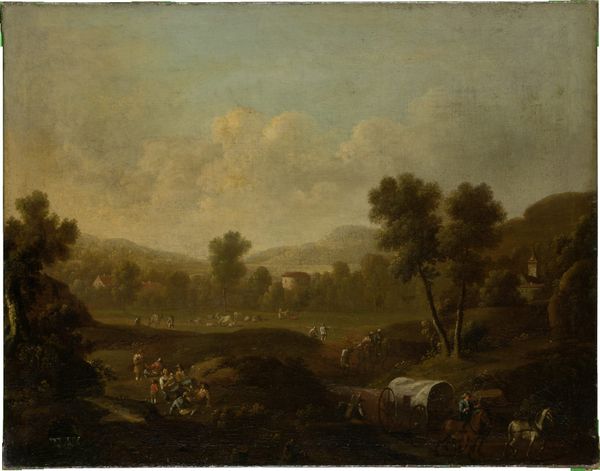
#
abandoned
#
possibly oil pastel
#
oil painting
#
derelict
#
underpainting
#
painting painterly
#
watercolour illustration
#
watercolor
#
warm toned green
#
environment sketch
Dimensions: height 58 cm, width 66.5 cm, depth 10.5 cm
Copyright: Rijks Museum: Open Domain
Curator: Welcome to the Rijksmuseum. Before you is Paulus Potter's "Cows in a Meadow near a Farm," painted in 1653. What do you make of it? Editor: My first thought? It's deceptively idyllic. Cows lounging, a shepherd tending, the soft light—but there’s a sense of enforced peace, almost artificial, within this composition. Curator: That’s a perceptive observation. Dutch Golden Age paintings like these played a crucial role in shaping national identity. This scene presents a specific vision of the Netherlands. Potter wasn’t just painting cows; he was portraying a prosperous, ordered society. Editor: I find that very interesting. Cows as symbols of national wealth. But where is the cow's agency in all this? Their role is to be consumed, to generate wealth and resources. The human narrative is valued above theirs. Curator: Indeed. Potter was masterful in his rendering of the animals, particularly their musculature and hides. It’s thought he completed extensive preparatory studies. His artistry elevates these farm animals and presents them in such meticulous detail. This attention helped solidify the idea of domestic bliss. Editor: Right, it perpetuates this romantic vision of rural life—an ordered countryside contributing to national greatness—but it ignores other socio-economic issues prevalent in 17th-century Netherlands: overseas exploration and exploitation for resource gathering by the colonizing Dutch nation. The paintings such as these often don't show the wealth that came from slavery, violence, and inequality. Curator: Your interpretation rightly directs us to look past what's easily apparent. The painting speaks volumes not only about wealth and comfort, but who has access to that comfort, and who is excluded. These art objects participated in crafting social narratives, justifying political decisions, and molding individual outlooks. Editor: Yes! When viewing landscapes such as this one we need to analyze the subtle forms of power, class, race and gender inequities at play that influenced the Dutch nation’s construction and its people’s mindset during that era. Curator: Absolutely. I think reflecting on this piece and engaging with what is there—as well as what has been left unsaid or unseen—enhances our comprehension not just of the painting itself, but also of our world around us today. Editor: Well said. It forces us to actively deconstruct ingrained belief systems. A serene facade indeed!
Comments
rijksmuseum about 2 years ago
⋮
Paulus Potter favoured painting animals in the countryside and at farms. He rendered the typical Dutch landscape – the pollard willows, the meadow, and the pond in the background –with great precision. In this painting the sun hangs low, calling to mind the late afternoon, when the languid cows and sheep take their rest.
Join the conversation
Join millions of artists and users on Artera today and experience the ultimate creative platform.
